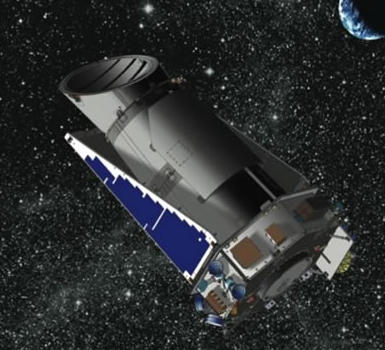Research
Brief introduction to stellar pulsations
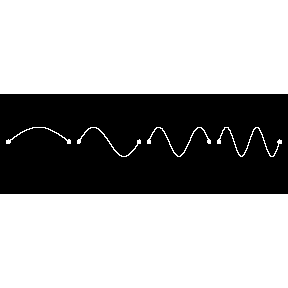
Likewise, 2-dimensional objects, membranes for example show spectacular oscillations. Different parts of the membrane move in the opposite direction and there are circles or curves that are stationary. With increasing frequency the complexity of the patterns will increase, too.
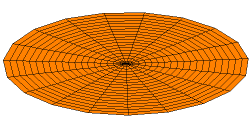
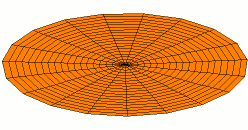
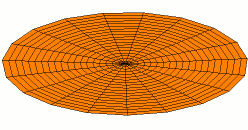

Taken from http://commons.wikimedia.org/
Stars are essentially 3-dimensional objects, so a rich variety of oscillations may be expected. Indeed, pulsation or oscillations were predicted by theory and observed for a large number of stellar types across the Hertzsprung-Russell diagram. Among them one can find young stellar objects, such as brown dwarfs or pre-main sequence objects, as well as solar type stars, dwarfs and giants, high- and low-mass, metal-rich and metal-deficients stars, and even stellar remnants, like white dwarfs and neutron stars.
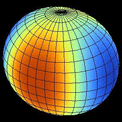
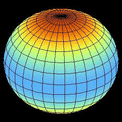

The above animations capture a basic feature of the pulsation, namely whether the spherical symmetry is maintained or not throughout the pulsation. Left panel is an example for the former, showing radial pulsation. The number of node(sphere)s along the radius gives the radial order of the pulsation (n). n=0 represents the fundamental radial mode, and modes with n= 1, 2, etc. nodes are called first, second, etc. overtones.
The other two panels simulate so called nonradial pulsation modes. During this type of pulsation the star no longer remains spherically symmetric. Two additional "quantum numbers" describe these variations (l,m, where |l|<=m), associated with the nodal lines along the stellar surface. In addition a real star can pulsate in a large number of modes at the same time, thus the displacement and the variation of the physical parameters are a superposition of the variations of the individual normal modes. Rotation and complicated stellar structures deform these simple patterns, constituting a more difficult problem and requiring involved mathematics to describe the pulsations.
What drives stellar pulsations? Inside the stars, the opacity of stellar gas usually decreases as the temperature increases. These zones tend to damp the pulsation. However, in the hydrogen and helium ionization zones for example, opacity increases with temperature. These zones are the driving regions of the classical pulsating variable stars. Let's suppose that the gas in the ionization zone is compressed by the infalling layers. This zone heats up and becomes more opaque to radiation. Since radiation diffuses more slowly through the layer (as a consequence of its increased opacity), heat builds up and the layer stores more energy than necessary to balance the weight of the upper layers. This way this region obtains extra restoring force by this extra heat energy. When the gas in this region is expanded, opacity decreases and the layer absorbs less energy than necessary to balance the weight of the upper layers. Thus the upper layers push it back inwards. This process is called the kappa-mechanism, where kappa stands for the opacity.
On the contrary, in the Sun convective motions excite stochastically hundreds of thousands of modes. Helioseismology (studying solar oscillations) enables the determination of solar structure, chemical composition, rotation, activity, etc. to an amazing accuracy. Application of this method to distant stars (asteroseismology) has just begun and promises great success.
Projects that I have been involved in:
Lend�üet - Near-field cosmology with pulsating variable stars: a Petascale challenge
The formation and evolution of the Milky Way is one of the key questions of the 21st century. The rapid technological development has reached the point when the cosmic processes in our own Galaxy can be explored as a function of time by studying billions of stars homogeneously and simultaneously. My new Near-field Cosmology Lend�let Research Group studies pulsating variable stars as distance indicators to find and characterize halo streams and remnants of merging dwarf spheroidal galaxies in order to decipher the hierarchical assembly of our Galaxy and Local Group galaxies aided by numerical simulations. We will explore the thirteen-billion-year history of our local cosmic neighborhood more precisely than ever before with the help of a team of internationally recognized leaders of the field, by coordinated ground-based sky surveys and space telescope observations, as well as by introducing Big Data methods. The research group joins the work of the most important ground-based sky survey, the Large Synoptic Sky Telescope (LSST) which starts operations in 2019 in Chile. LSST will produce several petabyte data revolutionizing the way research is done in astronomy, just like the Large Hadron Collider at CERN transformed particle physics years ago.
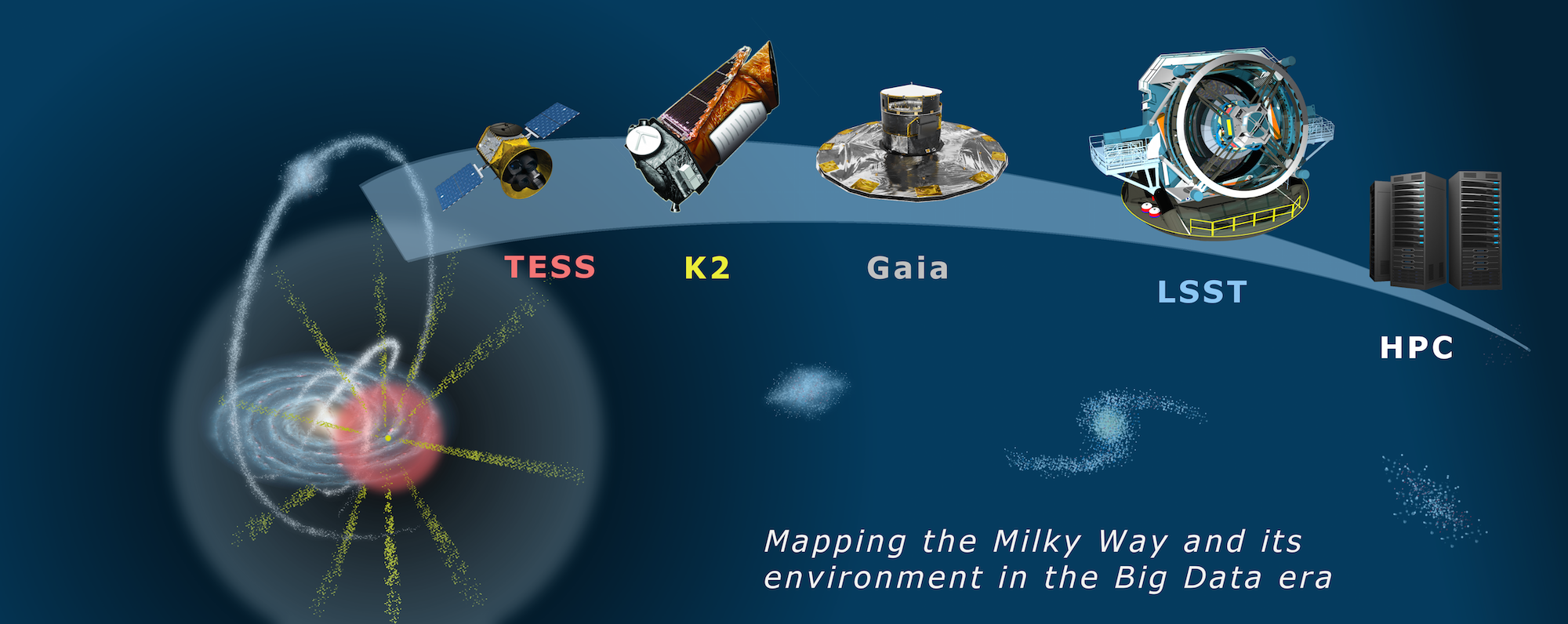
The essence of the Lend�let research: mapping the Milky Way with classical pulsating stars using space-based
and ground-based sky surveys and big data methods. Courtesy of L. Molnár.
Lend�let - Evolution of planetary systems around other stars
Exoplanets and exoplanetary system - planets orbiting distant stars - are one of the main driving force in present day astrophysics. Ijoined the Lendület group that was formed in the Konkoly Observatory in 2009, led by László L. Kiss. The group aimed at discovering multiple exoplanet systems and a new understanding of their evolution from the cosmic life's point of view. We combined asteroseismology and exoplanet research in novel ways to characterize central stars - and their planets at the same time. Stellar oscillations were be observed with the Kepler space telescope and ground based large telescopes, while we also developed sophisticated computer simulations for theoretical work. In addition to these, the Konkoly Lendület group introduced the latest developments in astronomical robotisation to the Piszkéstető Mountain Station of the Hungarian Academy of Sciences.
Numerical modeling of multimode stellar pulsations
Light variation of Cepheids and RR Lyrae stars has been known for more than a century. In fact the variability of δ Cephei and η Aquilae (both are Cepheids) were discovered by John Goodricke in 1784. Cepheids are bright supergiant stars obeying a strict period-luminosity relation, while RR Lyrae stars exhibit a fairly constant luminosity. Therefore these variables are excellent standard candles, establishing the cosmic distance ladder. Besides being benchmark objects for pulsation theory they play a special role in astrophysics because their extensively application to study cosmic and galactic ages, metallicity enrichment, galactic structure and evolution, stellar matter physics, stellar evolution and convection.
Cepheids and RR Lyrae stars are known to pulsate in oen single or two (occasionally three) radial modes simultaneously. There are hints that nonradial modes may be excited, too, in these objects. When two modes are present (ususally the fundamental mode & the first overtone, or the first and second overtones), the star is called a double-mode pulsator (alternatively beat Cepheid and RRd star in case of Cepheids and RR Lyrae stars, respectively). These stars are great astrophysical laboratories, because with the help of the additional independent frequency related to the second radial pulsational mode, the models are effectively constrained.
My main research field is to numerically model the double-mode pulsators. Until recently, most common radiativ models could not reproduce the steady double-mode pulsation. Taking into account the turbulent convection in the models showed the right direction and gave important insights into the mechanisms that team up to allow this important dynamical process to occur. The shear position of double-mode Cepheids on the fundamental mode period - period ratio plane (Petersen-diagam) is sensitive to the metal-content of the star. Thus linear models can already be used to test stellar, whereas galactic metallicity and nonlinear models can further narrow down the metallicity. Recently, we employed this method to fundamental mode / first overtone beat Cepheids found in the Small Magellanic Cloud by the EROS collaboration.
CoRoT - COnvection, ROtation & Transits plan�taires
CoRoT - Hungarian Asteroseismology Group
The COROT space telescope is a mission led by CNES in association with French laboratories (CNRS) and with several international partners. The spacecraft is equipped with a 27-cm diameter afocal telescope and a 4-CCD camera. The high-precision photometry preformed by the COROT instrument is used for two different kinds of investigation of equal importance. First to detect extrasolar planets, by observing the periodic dimmings occurring when these bodies transit in front of their parent star, as well as to conduct stellar seismology, that is to probe the inner structure of the stars. The satellite was lunched on December 27th, 2006.
Our group analyzes light curves of special, low-amplitude classical variable stars (Cepheids, RR Lyrae stars) to study stellar evolution and dynamical processes in these stars which is ususally difficult to achieve from ground-based data. On the other hand, normal-amplitude RR Lyrae stars are studied, as well. By benefitting from the unprecedented high-precision, continuous photometry we hope to get more information on well-known, but unexplained phenomena, and also to discover new ones in this so far unexplored territory.
 Blazhko modulation. 142 days of CoRoT monitoring of
V1127 Aql covering more than five complete Blazhko cycles. Note that the 0.3560 day long
individual pulsational cycles can not be discerned, only the strong amplitude modulations is
visible. This is one of the first continuous Blazhko light curves ever taken
(paper).
Blazhko modulation. 142 days of CoRoT monitoring of
V1127 Aql covering more than five complete Blazhko cycles. Note that the 0.3560 day long
individual pulsational cycles can not be discerned, only the strong amplitude modulations is
visible. This is one of the first continuous Blazhko light curves ever taken
(paper).
Kepler - A search for habitable planets
Kepler Asteroseismic Science Consortium (KASC)
Kepler Investigations at the Konkoly Observatory
The Kepler space telescope is a NASA mission. It was successfully launched on March 7th, 2009. The mission aims at finding a statistically meaningful sample of Earth-size planets via transit detection. The Kepler field is a fixed, 105 sq. degree low galactic latitude field, which is planned to be monitored continuously for up to 5 years with a 95cm Schmidt telescope in Earth-trailing orbit. This will guarantee a unprecedented photometric accuracy and homogeneity. Asteroseismology will help planet-host characterization via observing solar-like oscillations through precise wide-band photometry. Unexpected astrophysical phenomena and important contributions to long-standing problems are anticipated at this level even in the case of classical variable stars. Acknowledging these important contributions, KASC was formed to organize and maintain asteroseismology and pulsating variable star research with Kepler.
The Hungarian KASC members perform ground-based multicolor observations to help target selection work with the Konkoly Observatory Schmidt telescope located at Piszkéstető Mountain Station. Based on the preparatory work we submitted astrophysically interesting target candidates for the mission. Most of the proposed stars were approved, and their observations began after the comissioning phase of the spacecraft in May, 2009. As a recognition of this preparatory work I was appointed as chair of Working Group#7 (Cepheids) and chair of the Stellar modelling subgroup of WG#13 (RR Lyrae).
(1) One of our most recent achievements is the discovery of period
doubling in Kepler RR Lyrae stars, one of them is RR Lyr itself, the eponym and
prototype of its class. This is the first time that this dynamical pheomenon was observed in
RR Lyrae stars.
The period doubling manifests itself as alternating maxima and minima of the
pulsational cycles in the light curve, as well as through the appearance of half-integer
frequencies located halfway between the main pulsation period and its harmonics in the
frequency spectrum. Interestingly, all these pulsating stars are Blazhko modulated. The effect
was found to be stronger during certain phases of the modulation cycle. These findings point to
a strong connection between the period doubling and the mysterious Blazhko effect and we argue
that it may give us fresh insights to solve the century-old Blazhko enigma. These results were
discussed in detail at the
NASA-KASC press conference held at Aarhus, Denmark in 2010 October 26
(press
release).
Kolenberg et al. 2010, ApJL, 713, 198
Szabó et al. 2010, MNRAS, 409, 1244
 Period doubling. Two sections of the Kepler light curve of RR
Lyr are shown. In both cases the amplitude of the pulsation is increasing because of the Blazhko
modulation. However, in the left panel period doubling is striking, while in the right panel it
is not present.
Period doubling. Two sections of the Kepler light curve of RR
Lyr are shown. In both cases the amplitude of the pulsation is increasing because of the Blazhko
modulation. However, in the left panel period doubling is striking, while in the right panel it
is not present.
(2) The best thing was yet to come. We were able to reproduce the period doubling bifurcation in
our non-linear RR Lyrae models computed by the Florida-Budapest hydrocode. This enabled us to
trace the origin of this instability in RR Lyrae stars to
a 9:2 resonance between the fundamental pulsational mode and a high-order
(ninth) radial overtone showing strange mode characteristics. The resonance was found to
be surprisinglt strong, yet these resonances were neglected in previous theoretical studies. Our
investigations suggest that a complex interplay of radial (and presumably non-radial) modes could
happen in RR Lyrae stars that might have connections with the Blazhko-effect as well.
Kolláth,
Molnár, Szabó, 2011, MNRAS, 414, 1111
(3) We analyzed Kepler observations of 29 RR Lyrae stars. 14 of the stars exhibit
both amplitude and phase Blazhko modulations, with Blazhko periods ranging from 28 to
more than 200 days. The unprecedented precision of the Kepler photometry has led to the
discovery of the the smallest modulations detected so far. Moreover, additional frequencies
beyond the well-known harmonics and Blazhko multiplets have been found. In four stars, these
frequencies are close to the first and/or second overtone modes. The amplitudes of these
periodicities seem to vary over the Blazhko cycle. V350 Lyr, a non-Blazhko star in our sample,
is the first example of a double-mode RR Lyrae star that pulsates in its fundamental and second
overtone modes.
Benkő et al., 2010, MNRAS, 409, 1585
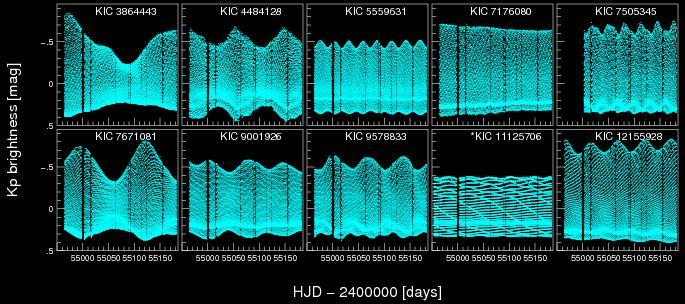
Blazhko RR Lyrae stars in the Kepler field. Great variety of light curve
modulation period, strength and shape is seen in this sample. However, the origin of the modulation is
still unknown.
(4) Prior to the launch of the Kepler space telescope we selected 40 candidate
Cepheids from previous surveys and databases in the Kepler field of view. We
analyzed the first 322 days of Kepler photometry of these candidates, and
initiated ground-based follow-up spectroscopic and multicolour photometric campaigns.
These data together allowed us to confirm that one of these stars, V1154 Cyg, is indeed
a Cepheid with a period of 4.9 days. Using the phase lag method we showed that this star
pulsates in the fundamental mode. The new radial velocity data are consistent with
previous measurements, suggesting that a long-period binary component is unlikely. No
evidence is seen in the ultra-precise, nearly uninterrupted Kepler photometry
for nonradial or stochastically excited modes at the micromagnitude level. The other
candidates are not Cepheids but an interesting mix of possible spotted stars,
eclipsing systems, flare and other variable stars.
Szabó et al., 2011, MNRAS, 413, 2709
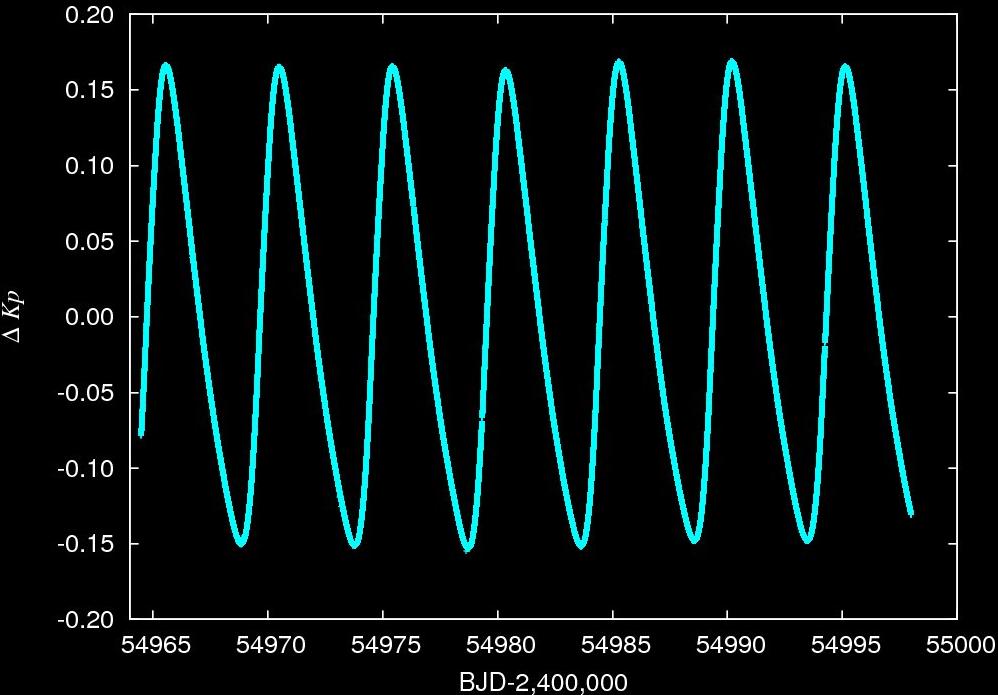
Light variation of the V1154 Cygni. The only known Cepheid in the Kepler field was
observed with a 1-minute cadence for 33.5 days.
The repurposed Kepler - the K2 Mission
With K2 we continued the exploration of various dynamical phenomena in RR Lyrae and Cepheids. Specifically, we launched the K2 RR Lyrae and Cepheid Survey. This will be a statistical survey, where we can learn about the occurrence rate of newly discovered dynamical phenomena (modulations, nonradial modes, period doubling, resonances), their dependence of age, metallicity, (extra)galactic environment. K2 observed over 4000 RR Lyrae stars and hundreds of classical and Type II Cepheids. We will use the derived results to explore the Galaxy and its subcomponents, like halo streams. We also plan to exploit the obvious synergies with Gaia, TESS and LSST. All the light curves of the survey will be made public at our webpage.

The footprint of the K2 RR Lyrae Survey along the Ecliptic plane. Black and blue points are observed RR Lyrae
stars, while the red dots show the RR Lyrae in the original Kepler field.
TESS - Transiting Exoplanet Survey Satellite
TESS continues the legacy of Kepler by monitoring almost the whole sky to search for exoplanets orbiting bright and neraby stars. It launched in April 2018, and soon started its mission covering 24 x 96 degree large swaths pf the sky. It started its scientific mission on the southern hemisphere. By early 2019 it started observing its sixth sector, and resulted in the discovery of half a dozen exoplanets. It delivers precise measurements of variable star light curves, as well. I'm coordinating the work of the TESS Asteroseismic Science Consortium Cepheids and RR Lyrae stars Working Group. The first light papers are already out. Exciting times!
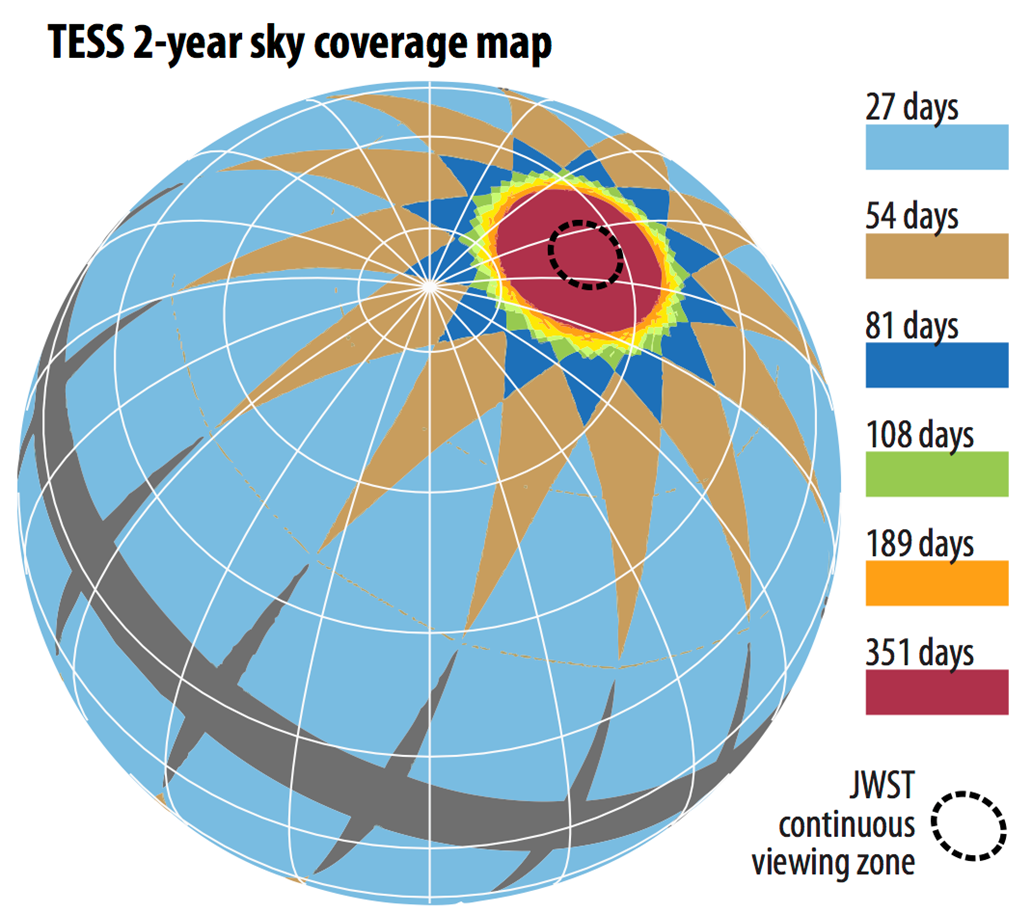
The sky coverage of the TESS Mission.
PLATO - PLAnetary Transits and Oscillations of stars
PLATO is the next planned European exoplanetary mission. It will search for bright, nearby transiting exoplanetary systems, which can be easily scrutinized with ground-based and space-born astronomical instruments. The extremely large field of view will enable the monitoring of a very large number of stars. The current design consists of 26 small telescopes (diam. of 10cm) on a common platform. As a high-precision photometric telescope system, it will support a host of additional science investigations, most notably the study of stellar light variations: oscillations, eclipses, eruptions, flares and so on. The launch is planned for 2026. Hungary joined the PLATO Consortium at the end of year 2010 with my leadership.
ARIEL - Atmospheric Remote-sensing Exoplanet Large-survey
ARIEL is ESA's M4 mission. The goal of the ARIEL mission is to investigate the atmospheres of several hundreds planets orbiting distant stars in order to address the fundamental questions on how planetary systems form and evolve. During its 4-year mission, ARIEL will observe 1000 exoplanets ranging from Jupiter- and Neptune-size down to super-Earth size in the visible and infrared with its meter-class telescope. The analysis of ARIEL spectra and photometric data will allow to extract the chemical fingerprints of gases and condensates in the planets' atmospheres, including the chemical composition in case of the most favorable targets. It will also enable the study of thermal and scattering properties of the atmosphere as the planet orbits around the star. The Hungarian team will contribute to the investigation of stellar activity, searching for exomoons and exorings, as well as studying young, active stars with ARIEL. The launch is planned for 2028. I'm representing Hungary at the ARIEL Payload Consortium Board.
